Loading page header ... or Your browser does not support JavaScript
Back to "Tamara" Main page Next >
Building 'Tamara':This is a quick trip into the past showing the building of the steel hull, fit-out, launch and first sail. Some of the construction details may be of interest. |
|
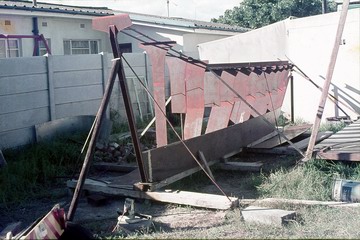 |
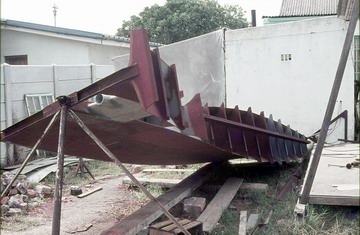 |
| The keel structure was built first, frames made from 5mm steel plate were
set up on a 12mm keel base. The first course of shell plating has been
tacked in place. |
For ease of welding I added a tripod so the whole keel could be flipped which made welding a lot easier. |
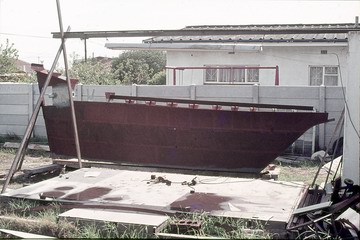 |
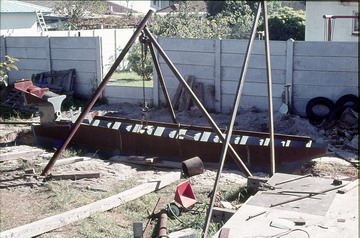 |
| Here the keel structure is finished, all shell plating is welded up and the sterntube fitted. |
The keel is placed into a pit to make construction of the hull easier - everything from now on has to be lifted up and this reduces the lift by nearly a meter. |
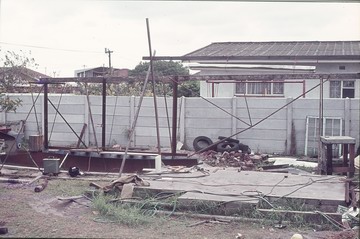 |
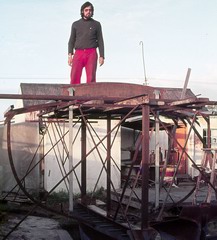 |
| With the keel forming a stable base an internal support structure was erected for the construction of the deck. |
The forward part of the hull was to be framed up first starting with station 6 |
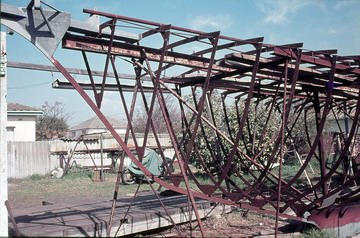 |
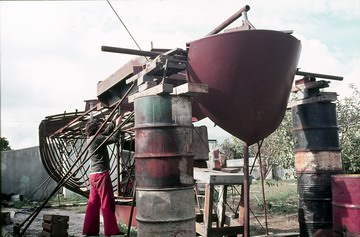 |
| The
deck beams were fitted first, then the pre-manufactured bow section
complete with stub bow sprit and lastly the flat bar stem. The frames
were initially bolted to the deck beams and the floors so
adjustments could be made during fairing, after which they were welded. |
The
aft section was extended from station 6 by adding coach roof sides and the
cockpit and transom as individual units. All of those sections were prefabricated.
Careful alignment was necessary especially the transom which at that
point was free standing. |
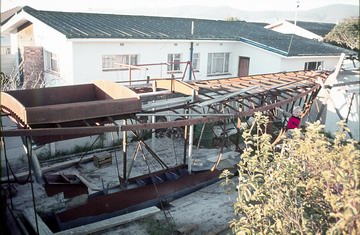 |
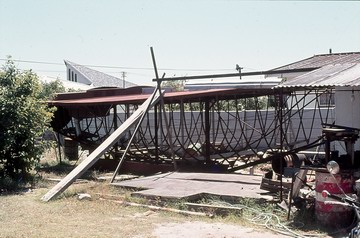 |
| The sheer line, where the deck and hull sides meet, is formed by fitting an L-shaped angle bent from 4mm plate.. |
The hull framing and sheer angle completed it was time to plate up the deck.. A ramp leads up to deck level. |
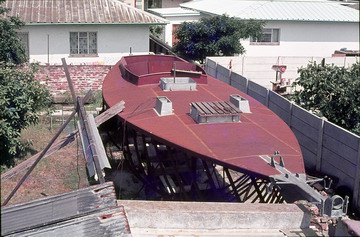 |
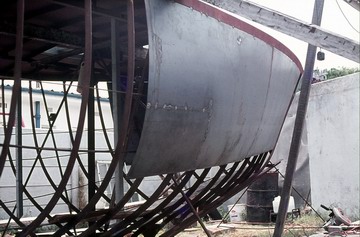 |
| This is what it looked like with the deck structure complete, hatches and doarade boxes fitted. |
Plating started at the bow, where full 1.22m wide sheets could be fitted, notice also that the full length of 2.44m was used for the first two sheets.
|
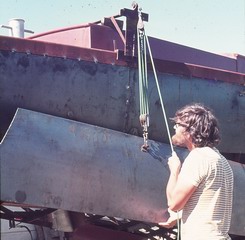 |
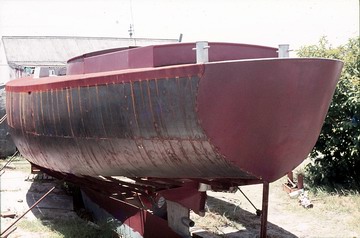 |
| The stern section having more curvature required cutting the sheets in half longitudinally. A light tackle was used to lift the plates. |
This completed plating down to approximately waterline. |
Top of Page
Loading first page footer ... or Your browser does not support JavaScript
Loading second page footer ... or Your browser does not support JavaScript